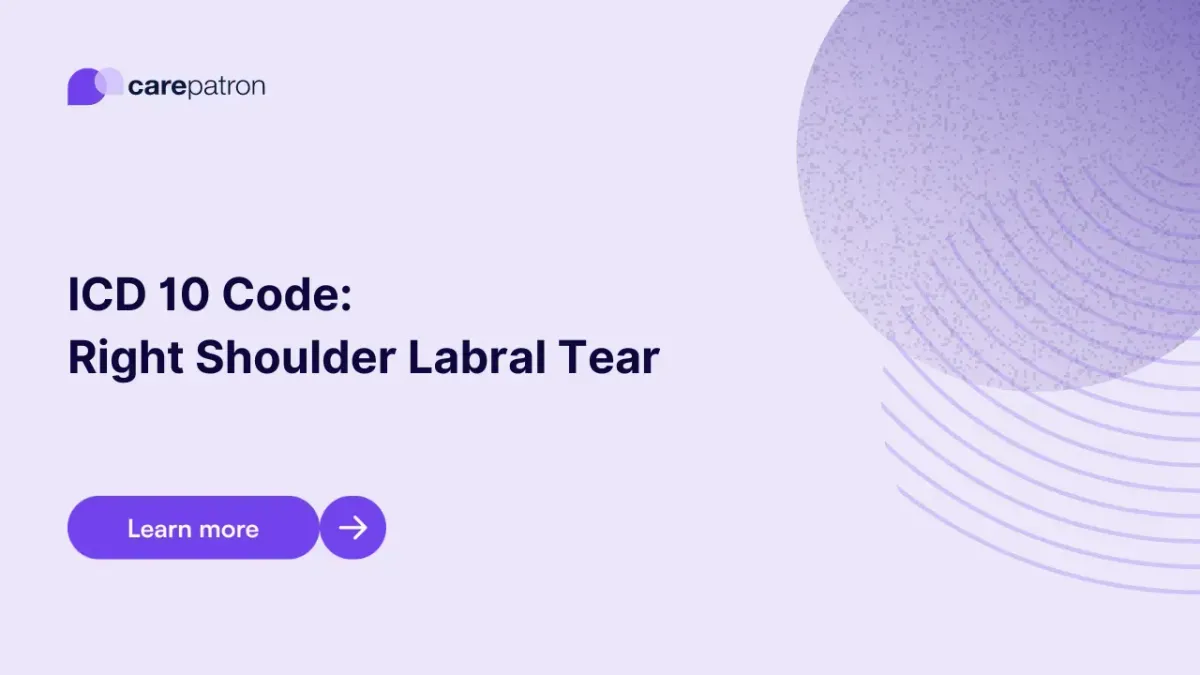
Right Shoulder Labral Tear ICD-10-CM Codes
Read this short guide to learn about right shoulder labral tear ICD codes you can use.
Use Code
Commonly asked questions
They will conduct physical examinations to detect the possibility of a labral tear, then conduct imaging tests to confirm it and check how severe the tear is.
It depends on the severity of the tear. Mild tears simply need rest and maybe physical therapy. Severe tears require surgery, extended rest, and rehabilitation.
It will likely take eight to twelve weeks. The labrum will take four to six weeks to reattach itself to the bone. It’ll also take another four to six weeks for the labrum to regain strength. The labrum needs to be rehabilitated to regain its strength correctly.
EHR and practice management software
Get started for free
*No credit card required
Free
$0/usd
Unlimited clients
Telehealth
1GB of storage
Client portal text
Automated billing and online payments
